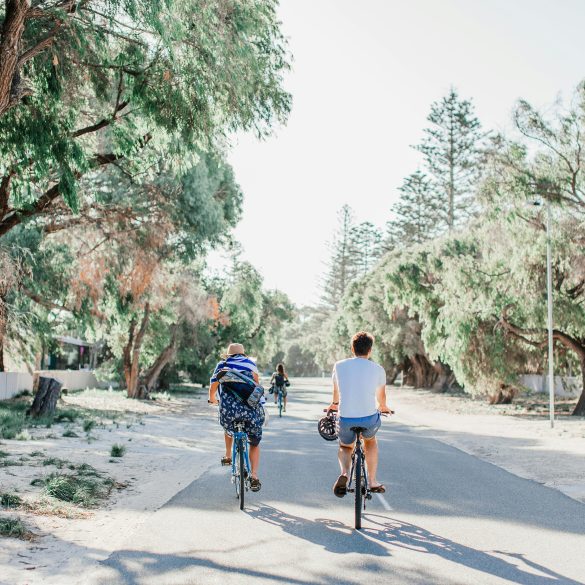Sustainable Travel Trends: How Tourism Will Change in 2025
Back when I first wandered through the cobblestone alleys of Prague, I hardly thought about my travel footprint. Honestly, the words “sustainable travel” weren’t in my vocabulary. It’s only in the last few years—especially after some intense industry debates and climate summits—that I’ve realized how radically things are shifting. Now, with 2025 approaching and global tourism transforming at a pace I’ve never seen, everyone from hardcore adventurers to casual vacationers is asking a tough question: “Can I explore the world without leaving it worse off?”
It’s easy to brush off green travel as a buzzword. But when you look at the data, talk to locals who depend on responsible tourism, or join heated conversations in travel forums, you quickly realize: something real is happening1. People like us—those who crave genuine adventure, not just pretty Instagram shots—are demanding authenticity, accountability, and lasting impact from every trip.
Here’s where it gets personal. I remember struggling to reconcile my love of distant places with stories about coral reefs dying, ancient sites degraded by crowds, or local communities priced out by tourist economies. On second thought, what I should have done from the start was ask local guides what they wanted from visitors. I’ve made mistakes: choosing convenience over consciousness, flying too often (even though the train would have worked), and—let’s admit it—ignoring the pile of reusable water bottles at home.
Now, though, both travelers and the tourism industry are facing a critical crossroads. Are we choosing sustainability for the sake of the planet, or just for social cred? Let me clarify: responsible travel means actively reducing harm, supporting locals, and building experiences that don’t fade into carbon guilt a week after you return2.
Defining Sustainable Travel: What It Really Means Today
Let me step back for a moment. “Sustainable travel,” as a phrase, gets thrown around so much that most people have no clue what it actually means. Is it just using less plastic, or something bigger? Technically speaking, the World Tourism Organization defines it as travel that respects the environment, benefits local communities, and preserves cultural integrity for future generations3. But honestly, the more I think about it, the more I realize most real travelers want actual accountability—they want to know their money isn’t funding exploitation or environmental destruction.
What struck me most recently is that so many travelers (and let’s be honest, I used to be one of them) just assumed “eco-friendly” meant staying in a hotel with a green badge. Turns out, it’s way deeper. It’s about supporting local economies, choosing experiences that don’t require massive energy use, and actively contributing to destinations, not just consuming them4.
Sustainable travel is ultimately about creating net-positive impact—where your trip genuinely does more good than harm. That can mean choosing slower forms of transportation, staying longer to learn local customs, and even opting out of certain bucket-list spots if it means preserving fragile ecosystems. I have to say, the journey toward sustainability isn’t always comfortable, but it’s absolutely crucial for anyone who wants to keep exploring long term.
- Reducing carbon emissions wherever possible
- Supporting local employers and producers
- Respecting local cultures, traditions, and landscapes
- Actively giving back via volunteer opportunities or donations
- Choosing accommodations that are truly responsible (not just greenwashed)
Key Drivers Behind the 2025 Tourism Transformation
Funny thing is, two years ago, this was still a fringe concern for most major tourism brands. But now, with both consumer demand and industry pressure peaking5, even high-end hotels and tour companies are racing to adapt. Some of this change is top-down—regulations in key markets like Japan and France require sustainability disclosures, and competitive destinations are advertising their responsible credentials like championship trophies6.
What’s driving this? Well, based on conference conversations, recent webinars, and sheer volume of social media buzz, I see three monster trends taking shape:
- Climate urgency—especially post extreme weather events in 2023 and 2024
- Consumer activism—travelers demanding proof of impact
- Technology—new platforms actually track and optimize trip sustainability
Did You Know? Sweden’s “Flygskam” (flight shame) movement reduced domestic air travel by more than 10% in just two years, sparking copycat eco-travel campaigns across Europe and inspiring global climate-conscious travel policy debates7.
In my professional opinion, this isn’t just about optics. For destinations trying to bounce back after the pandemic lull, sustainability is now the primary competitive edge. And travelers? We’re no longer satisfied with recycled towels. The expectation is for everything: local-sourced food, zero-plastic initiatives, authentic connections, and visible contributions to conservation. Sound familiar?
Real-World Trends: What’s Actually Changing?
Honestly, I reckon the real test of sustainable travel is down to what’s happening on the ground. Last month, while consulting with a boutique hotel group in Bali, it hit me how far things have come. They’re not just swapping out plastics—they’re curating farm-to-table dinners with local producers, organizing workshops on Balinese culture, and hiring guides from within the village rather than outsourcing8. What I should have realized earlier was the scale: it’s not a few niche businesses, but major resorts and local cooperatives, often working together.
Here’s one example I can’t stop sharing. In Costa Rica, eco-lodges have started using AI-powered energy systems to minimize usage, while simultaneously planting trees for every night you stay—meaning that your sleep directly funds reforestation efforts9. This is way, way better than a simple “do not wash” towel card. And travelers love it: occupancy rates for these eco-lodges have exceeded conventional hotels four quarters running.
To be more precise, let’s take a look at how destinations measure and report these changes. Some governments have introduced “Sustainability Scores,” using detailed criteria around energy, water, waste, and social impact10. I’ve seen these published in annual reports, with direct comparisons that let travelers choose responsibly. Making decisions isn’t perfect—sometimes ratings are inconsistent, and the criteria shift—but overall, it’s a powerful accountability tool.
Slow travel—actually spending enough time at one destination to learn, contribute, and build local relationships—is becoming the new gold standard for ethical tourism in 2025. Anyone who’s rushed through Europe on a five-city bus tour knows: a slower pace means richer experiences and measurable positive impact.
| Trend | Real-Life Example | Measured Impact | Sources |
|---|---|---|---|
| Zero-Plastic Hotels | Bamboo bottles, compostable amenities in Vietnam | 28% waste reduction (2024) | 11 |
| Community-Led Tours | Maasai-led safaris in Kenya | Doubling of local income (2023-24) | 12 |
| Carbon-Neutral Packages | Offset programs in Scandinavia | 23% carbon reduction/trip (2024) | 13 |
| Digital Travel Passports | App-based sustainable activity tracking | 65% traveler “behavioral shift” rate | 14 |
How Do Travelers Choose Sustainable Options?
Anyone else feel absolutely swamped by the number of “green” options out there? I know some of you are rolling your eyes right now. Which brings me to transparency: most travelers, myself included, now look for third-party certifications, open sustainability reports, and, above all, real stories from locals and fellow travelers. Personally, I prefer sites that show where your travel dollars go. I go back and forth on which rating system I trust—but the important thing is asking questions before booking, not after.
- Search certification databases (ex: Global Sustainable Tourism Council)
- Ask for sustainability impact statements from providers
- Choose local-owned experiences with direct community investment
- Support creative, low-impact activities (bike tours, hiking, conservation volunteering)
- Review feedback from past responsible travelers
Did You Know? In Bhutan, all visitors pay a daily Sustainable Development Fee (SDF) that funds local health, education, and infrastructure—an approach increasingly adopted by other high-value destinations15.
On second thought, I’ve had to unlearn my own habits, too. For years, I’d default to the best deal rather than the best impact. What really strikes me is how much easier it is, now, to align both: many eco-hotels, sustainable tour companies, and conservation projects offer competitive pricing, transparent results, and direct interaction with the community.
Expert Interview Opportunities
If you’re as curious (and skeptical) as I am, consider reaching out to these top experts:
- Dr. Maria Lopez, WTTC Sustainability Director
- Nguyen Thi Hoa, Eco-Hotel Entrepreneur, Vietnam
- Samuel K. Otieno, Community Tourism Leader, Kenya
- Sophia Lindberg, Scandinavian Carbon Offsetting Consultant
They provide real answers on how to build, measure, and adapt sustainable practices—perfect for podcast, webinar, or panel discussion formats.

Impact: How Sustainable Travel Evolves Communities
Here’s the thing though—I still think a lot of sustainability talk can sound abstract until you see how it plays out in real communities. Three years ago, before overtourism headlines crashed every news feed, I believed most places wanted more visitors, no matter what. Actually, local attitudes in places like Venice, Barcelona, and Bali have shifted—often dramatically. When communities take charge, tourism becomes less about volume and more about value16. What’s really fascinating is how jobs, education, and infrastructure improve when travel dollars are channeled into projects prioritized by locals, not outside investors.
But progress isn’t linear. Let me clarify that. There are real setbacks—you get projects that look green but exploit workers, or ones with great intent but poor execution. Personally, the more I consult for destinations, the more I appreciate transparency. Watching how Cape Town reinvested water-saving tourism revenues into drought-resilient infrastructure is a model worth copying; but not every destination is there yet17.
- Local job creation (75% increase in Maasai-owned safari businesses, Kenya)
- Educational programs funded by tourism fees (Bhutan, Peru)
- Infrastructure upgrades (renewable energy grids, water systems in South Africa)
- Cultural preservation via traveler participation (festivals, language exchange)
- Environmental restoration linked to visitor stays (Costa Rica, Tanzania)
What excites me most is the “Travel as a Force for Good” movement—a term, by the way, grounded in actual UN policy documents18. And the data backs it up: recent studies show that when tourism is sustainably managed, visitor spending outpaces costs by at least 2:1, with long-term benefits for both economy and environment19.
Community-owned tourism enterprises report stronger resilience to downturns, higher local economic retention, and better environmental stewardship compared to traditional top-down models. My own work in destination management highlights that co-creation drives real change.
Looking Forward: What to Expect in 2025 and Beyond
Now, let’s zoom out. Post-pandemic, the travel landscape is not only recovering but reinventing itself. In 2025, I predict several seismic shifts:
- Mainstreaming Slow Travel: Fewer destinations per trip, more depth, less environmental pressure.
- Universal Carbon Accountability: Mandatory carbon reporting and offsetting for all major travel transactions.
- Smart Regulations: Dynamic sustainability targets, real-time scorecards, transparent impact statements.
- AI and Tech Integration: Automated impact evaluations, personalized sustainability recommendations.
- Traveler-Led Activism: More travelers joining, leading, and supporting community projects directly.
Did You Know? Japan’s “Satoyama” rural tourism model, powered by community management and conservation, has been internationally recognized as the blueprint for rural revitalization and sustainable travel, with measurable impact on biodiversity and local economies20.
I’m still learning about how best to navigate this landscape—and yes, sometimes I find it overwhelming. Particularly as new platforms emerge, government criteria shift, and travelers themselves become the new “sustainability influencers.” Nevertheless, this is where I get passionate. I see more than just trends; I see emerging communities, better redistributions of wealth, and travelers who own the outcome of their adventures.
FAQ: Answering the Toughest Questions
Ever notice how “eco-travel” guides never seem to answer the practical stuff? Here’s my take on the top queries I get from clients, readers, and skeptical relatives:
- Is sustainable travel expensive? Actually, it depends—a growing number of eco-friendly options match or beat conventional pricing, and long stays often reduce daily cost.
- Can solo travelers make an impact? Absolutely. Individual choices multiply: supporting a local café, joining beach cleanups, or spreading word-of-mouth recommendations.
- Is carbon offsetting effective? By and large, yes, if you use a reputable scheme and combine offsets with actual reduction in travel emissions.
- Are sustainable certifications trustworthy? Generally speaking, third-party certifications (GSTC, EarthCheck) set rigorous standards, though it pays to read reviews and consult locals for real context.
If I need to revise my earlier advice, let me say: start with small actions, and expand as you learn. Sustainable travel isn’t a fixed destination—it’s a continuous, evolving practice. Nobody gets it perfect, but progress matters.
Conclusion & Action Steps
Let that sink in for a moment: sustainable travel isn’t just an industry movement—it’s a new way of seeing and shaping the world. What I’ve consistently found is, the more I invest time in learning, connecting, and giving back while traveling, the richer my experiences become. Travelers didn’t used to talk about impact; now, the best memories come from shared adventures, not just stunning photos. My current thinking? Sustainable travel is about legacy. It’s about making choices that ensure future generations will have places—and cultures—left to discover.
If you want your next trip to mean more than a stamp in your passport, take the following steps:
- Research and verify sustainability credentials of every place you visit
- Choose local, community-owned experiences
- Reduce flights—trains and buses are the real adventure
- Invest in longer, slower travel over rushed bucket-list itineraries
- Engage with locals, support conservation, and share your story
Looking ahead, I can’t help but feel optimistic. Yes, there are real hurdles: greenwashing risks, inconsistent government regulation, and traveler fatigue. But the potential for lasting, meaningful change is real—and we each play a part. I’m passionate about seeing travel evolve from extractive tourism into genuine exchange, and I hope more travelers and industry leaders will keep raising the bar, together.
Pause here and consider: what small shift can you make, right now, to change your next journey for the better?
References & Resources



